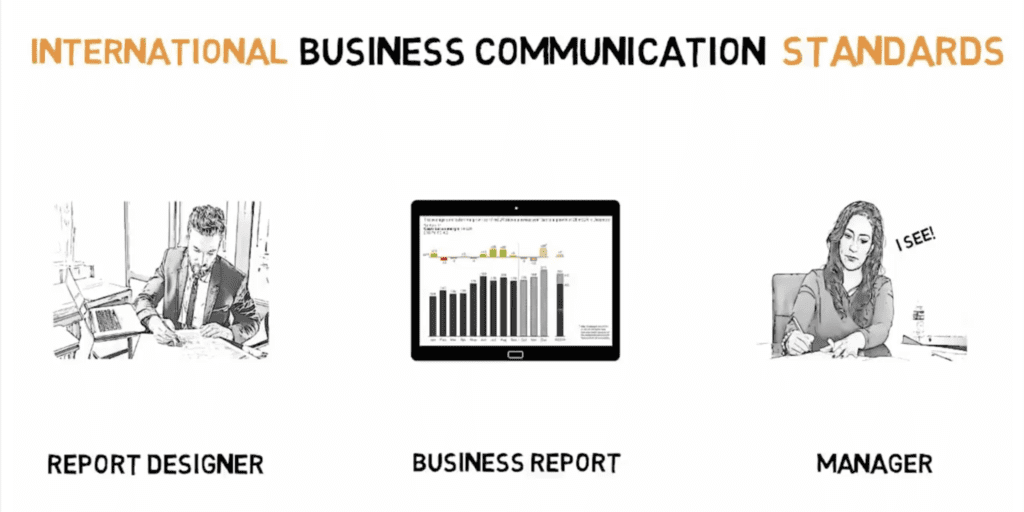When it comes to business communication, notation standards offer numerous benefits.
Let’s take a few professions as an example. Imagine if all musicians throughout history used different sheet music notations to make their music “understandable”. Or different drawing notations by architects and engineers. It would be close to impossible to turn music into a global phenomenon or to create a standardized approach to engineering and architecture.
As far as communicating ideas goes, one rule always applies: where there are standards, there is understanding.
In this article, we explore why notation standards matter in business reports and the most significant benefits of standardized reporting.

What Are Notation Standards in Business Communication?
Wiktionary defines notation as “the act, process, method, or an instance of representing by a system or set of marks, signs, figures, or characters.”
Introducing notation standards for business communication is known to influence comprehension and credibility within a company positively.
Nowadays, only business management can still afford not to have company-specific or even any notation standards. Even though companies can function without notation standards, there are numerous risks and disadvantages associated with it, such as making wrong decisions based on incomplete or inaccurate information.
Notation standards can facilitate the understanding of reports and presentations by establishing rules for their conceptual and visual design.
It is easier to understand reports and presentations with:
- a clear message,
- a well-structured storyline,
- the same look for things meaning the same, and
- higher information density.
In addition, notation standards help increase the credibility of reports and presentations. It is easier to make decisions if you are confident that you are not being fooled by deliberately incomplete information and misleading visualizations.
Benefits of Notation Standards in Business
According to ISO, standards bring “technological, economic and societal benefits. They help to harmonize technical specifications of products and services, making the industry more efficient and breaking down barriers to international trade.”
When it comes to business communication and reports, there are three most common benefits:
- Improved quality,
- Reduced reaction time,
- Reduced costs.
Improved quality
With notation standards, companies will be able to produce better-understood dashboards, clearer messages in better comprehensible reports, and – ultimately – better decisions. If the readers of reports can clearly understand what is being said, they will have a much better grasp of the facts and can therefore come to better decisions.
In other words, the quality of understanding will directly impact the quality of business decisions derived from your reports.
Reduced reaction time
Companies that implement notation standards typically speed up the overall decision-making process. New dashboards are delivered faster, business analysts are able to respond to questions more rapidly, and executives are able to make better-informed decisions.
In a nutshell, it’s about making better business decisions, faster.
Reduced costs
The two qualities mentioned above directly impact the cost and efficiency of business operations.
Once notation standards are implemented, costs are reduced by saving time in delivering dashboards, data analysis, and preparing reports and presentations. However, the greatest benefit will be lowering the time executives spend attempting to interpret reports. Win-win.

Start Using Standardized Notation Today
Did you know that you can reduce the production time of your reports from several days to several hours thanks to standardized reporting? In addition, using the same templates for different reports and dashboards certainly reduces the complexity and, therefore, sources of mistakes.
Our recommendation? IBCS® (International Business Communication Standards).
Would you like to learn about IBCS and their standardized notation rules? Let us know.
TRUECHART fundamentally changes data visualization and collaboration – powered by standardized IBCS® templates. It provides the speed and scale needed to tackle petabytes of business intelligence in interactive speed to make data management and complex reporting much easier, simpler, and faster.
Stay up-to-date with TRUECHART. Follow us on LinkedIn.
